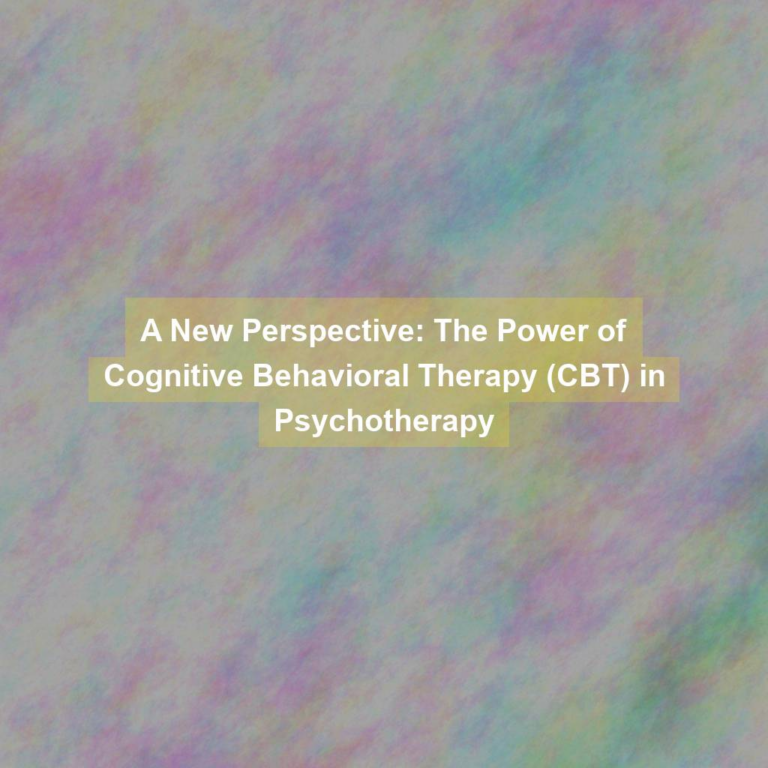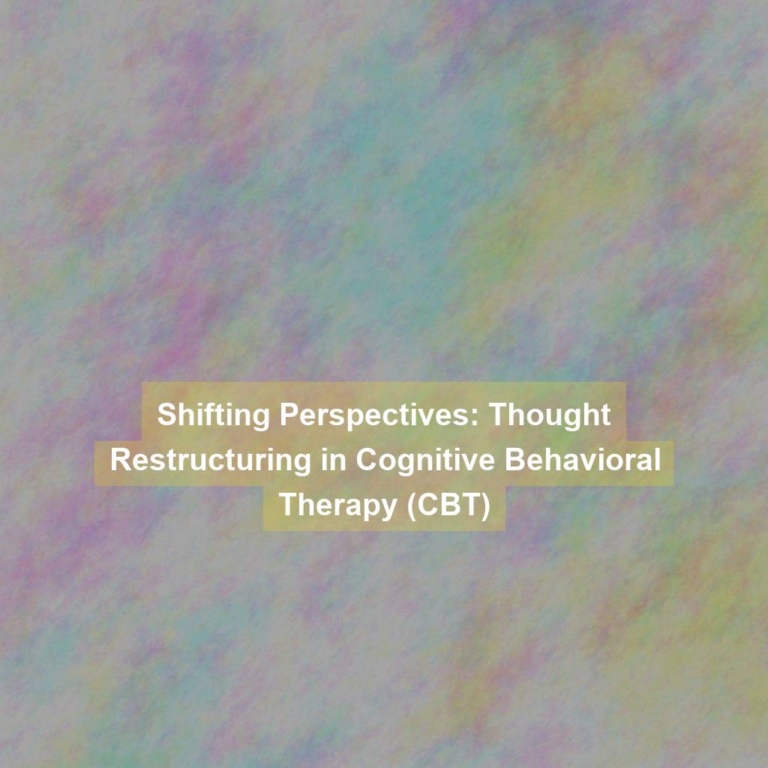Have you ever noticed how your thoughts can directly impact your emotions and behaviors? Cognitive Behavioral Therapy (CBT) delves into the intricate relationship between these three components, offering techniques that can lead to significant behavioral change.
By identifying negative thought patterns and challenging them, CBT empowers individuals to make tangible changes in their lives. But that’s just the beginning – CBT also incorporates behavioral experiments, exposure therapy, and the development of coping strategies for long-term success.
As you explore the techniques of CBT, you’ll discover a wealth of practical tools that can help you take control of your thoughts and behaviors in a meaningful way.
Understanding Thought-Emotion-Behavior Connection
Understanding the connection between your thoughts, emotions, and behaviors is a fundamental aspect of cognitive behavioral therapy. It’s essential to recognize that your thoughts can directly influence your emotions and subsequent behaviors. For example, if you constantly think about past failures, you may feel anxious or demotivated, leading to avoidance behaviors.
On the other hand, positive thoughts can generate feelings of confidence and happiness, prompting proactive and productive behaviors. This interconnected nature of thoughts, emotions, and behaviors forms the basis of cognitive behavioral therapy techniques.
Through CBT, you’ll learn to identify and challenge negative thought patterns that contribute to distressing emotions and maladaptive behaviors. By doing so, you can replace them with more balanced and constructive thoughts, which in turn can lead to healthier emotional experiences and more adaptive behaviors. This process empowers you to take an active role in managing your mental health and well-being.
Identifying Negative Thought Patterns
To effectively identify negative thought patterns, begin by observing your recurring thoughts and examining their impact on your emotions and behaviors. Notice when you feel upset, anxious, or demotivated, and then trace back to the thoughts that preceded these feelings.
Look for patterns in your thinking, such as catastrophizing, black-and-white thinking, or overgeneralization. These patterns often manifest as automatic negative thoughts that occur without conscious effort. Pay attention to the triggers that lead to these negative thoughts. Are there specific situations, people, or internal cues that consistently spark these patterns? By identifying these triggers, you can anticipate and prepare for them in the future.
It’s essential to keep a thought journal to record these recurring negative thought patterns. Documenting your thoughts will help you recognize and understand them better. Additionally, consider seeking the help of a cognitive behavioral therapist who can guide you through this process and provide valuable insights.
Identifying negative thought patterns is the first step toward challenging and changing them to improve your mental well-being.
Challenging and Restructuring Thoughts
After recognizing the negative thought patterns that impact your emotions and behaviors, the next step is to actively challenge and restructure those thoughts to promote healthier cognitive patterns.
Start by questioning the evidence supporting your negative thoughts. Ask yourself, ‘Is there real evidence for this thought, or am I making assumptions?’ Challenge the validity of your negative thoughts by considering alternative explanations for the situation. This can help you gain a more balanced perspective.
Another effective technique is to examine the potential consequences of holding onto these negative thoughts. Consider how these thoughts are affecting your emotions and behaviors. Are they preventing you from engaging in activities you enjoy or impacting your relationships? By acknowledging the impact of these thoughts, you can motivate yourself to actively challenge and restructure them.
Once you’ve challenged your negative thoughts, it’s time to restructure them. Replace irrational or negative thoughts with more realistic and balanced ones. Practice using affirmations and positive self-talk to reinforce these new thought patterns. Over time, this process can lead to a more positive and adaptive mindset, ultimately improving your overall well-being.
Behavioral Experiments and Exposure Therapy
When implementing behavioral experiments and exposure therapy, consider how gradually exposing yourself to feared or avoided situations can help reduce anxiety and fear responses. By facing these situations in a controlled and intentional manner, you can learn to challenge and change your automatic fear response.
Start by identifying a specific fear or avoidance behavior that you want to address. Then, create a step-by-step plan to gradually expose yourself to the feared situation. For example, if you have a fear of public speaking, you could start by speaking to a small group of friends before gradually working your way up to larger audiences.
Throughout this process, it’s important to pay attention to your thoughts, emotions, and physical sensations. This awareness can help you challenge any negative beliefs or catastrophic thinking patterns that may be contributing to your fear.
Additionally, by repeatedly exposing yourself to the feared situation, you can build confidence and reduce the intensity of your fear response over time. Remember, this process takes patience and persistence, but the benefits of overcoming your fears can be life-changing.
Developing Coping Strategies and Relapse Prevention
As you work on developing coping strategies and relapse prevention, it’s important to build on the progress you’ve made by gradually exposing yourself to feared situations and challenging automatic fear responses. This process, known as exposure therapy, involves facing your fears in a controlled and supportive manner. By gradually confronting situations that cause anxiety, you can learn that these situations aren’t as threatening as you initially believed. This can help to reduce the intensity of your fear response over time.
In addition to exposure therapy, developing coping strategies involves identifying and modifying negative thought patterns. This might include challenging irrational beliefs and replacing them with more realistic and positive thoughts. Learning relaxation techniques, such as deep breathing or mindfulness meditation, can also be beneficial in managing anxiety and stress.
Relapse prevention is an essential aspect of maintaining the progress you’ve achieved. It involves identifying potential triggers and developing a plan to cope with them effectively. This may involve seeking support from friends, family, or professionals, as well as implementing healthy lifestyle habits and self-care practices. By proactively addressing potential challenges, you can minimize the risk of setbacks and maintain long-term progress.
Conclusion
So, now you know the techniques of cognitive behavioral therapy (CBT) for behavioral change.
By understanding the thought-emotion-behavior connection, identifying negative thought patterns, challenging and restructuring thoughts, and engaging in behavioral experiments and exposure therapy, you can develop coping strategies and prevent relapse.
These techniques can help you make positive changes in your behavior and improve your overall well-being.
So, why not give them a try and see the difference it can make in your life?







